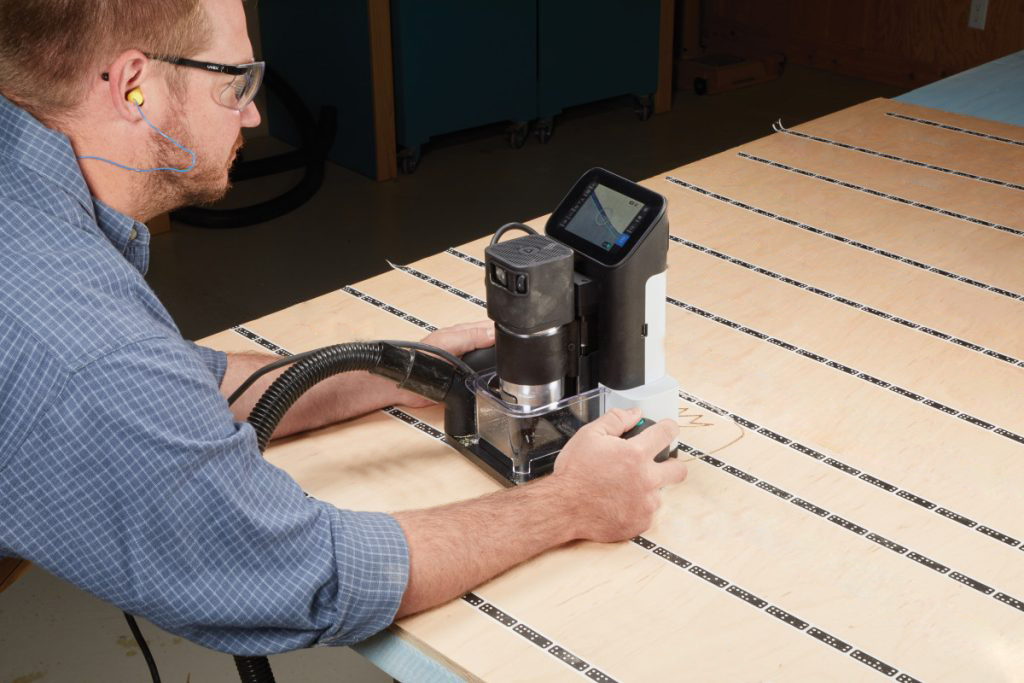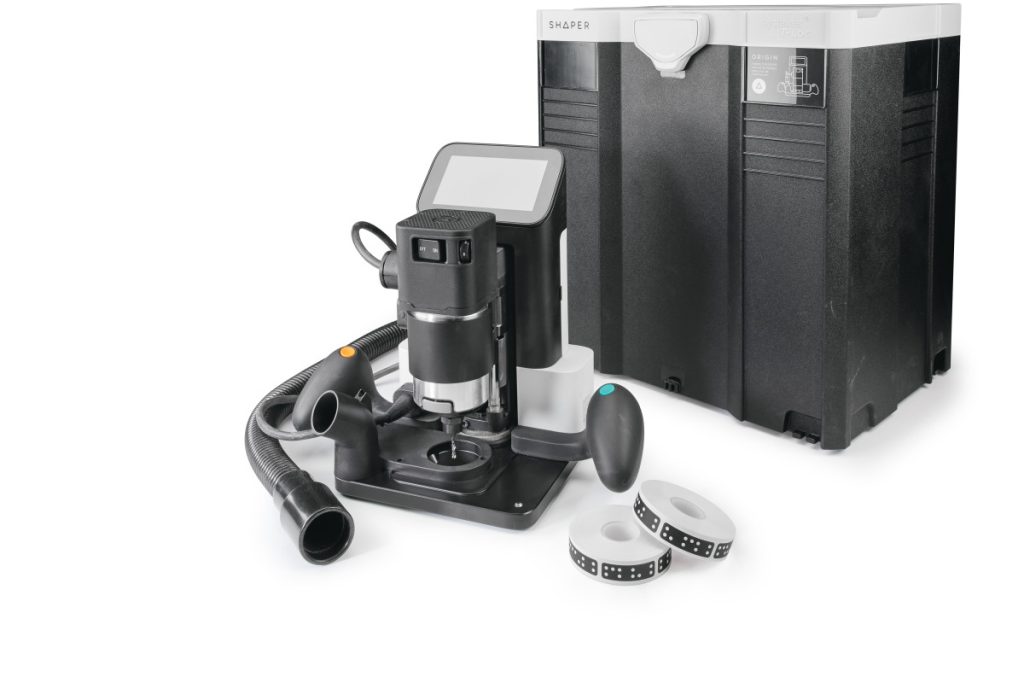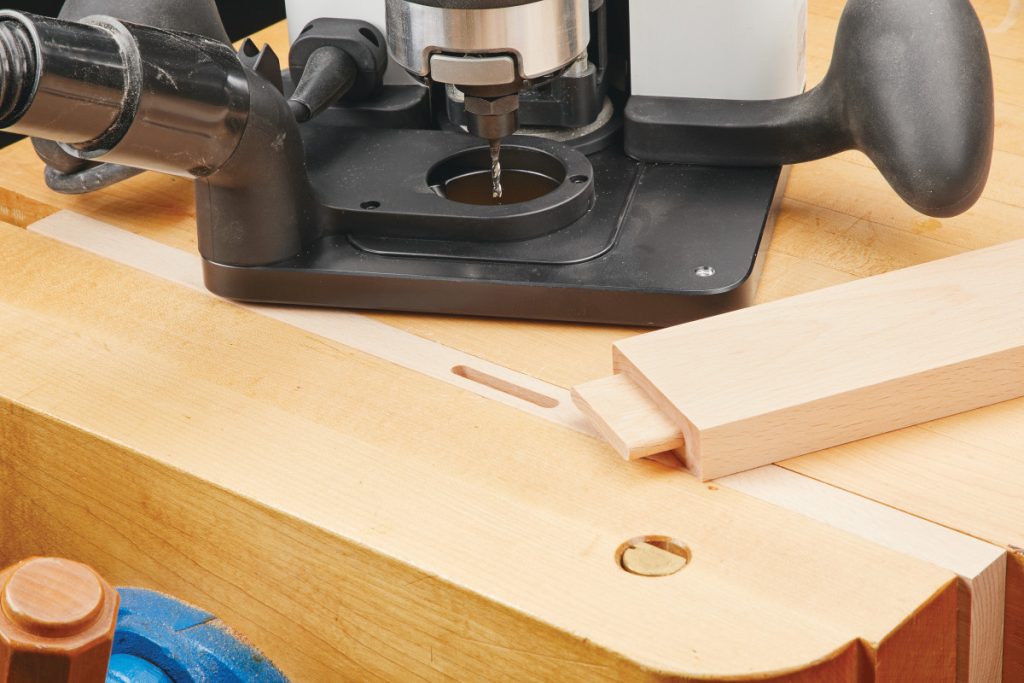We may receive a commission when you use our affiliate links. However, this does not impact our recommendations.

Shaper Origin is a hand-held CNC router that is redefining what’s possible.
Every now and then, a new tool hits the marketplace that changes the way we work. In the last decade or so, CNC routers have been one of those tools. Love them, hate them … want one, don’t want one. Whatever your viewpoint is, you can’t deny that they truly open up a lot of doors in the woodshop. Within the world of CNC’s, there’s one product that stands out, however. That’s Origin, by Shaper Tools. If you don’t know what Origin is, take a minute to watch their video below.
In short, Origin is a hand-held CNC router. That’s right, you heard me. And, you won’t believe how well it works until you’ve used one. While it shares some common forms with a traditional-style router, the magic comes from the controlled gantry that grips the motor. The gantry is controlled by an on-board computer and camera. The router then reads tape that you apply to the work surface to orient itself. Now, it’s a simple matter of following the lines that appear on the computer screen. As you move, the gantry is auto-correcting for any movement you make off the line. Does it sound magic? It should, because it sure feels like it as you use it.

Shaper Origin comes with Origin, a couple of rolls of domino tape, a dust collection hose, and a systainer.
Now, I know what you’re thinking: Ok, that’s cool. But why would I pick up Shaper Origin over a more “traditional style” CNC? Well, I think there are a few good arguments to be made for that.
Versatile
The first, is the number of applications that Origin has. Unlike traditional CNC’s, you’re not limited by bed size. That means you can have a work area as big as you want to lay the tape down. This is amazing for working on extra-large projects, such as full-sized sheets of plywood, or doing complex flooring inlays. Sizing aside, you’re bringing Origin to the worksurface. This means that you can tackle surfaces that are, traditionally, hard for a CNC to reach (think of the ends of a board). When you combine Origin with the Workstation, you have a joinery powerhouse that can whip out dovetails, box joints, mortise and tenons, and more. Signs, joinery, inlay work, projects, engraving…The possibilities are endless. I also feel like I should mention that this is all packed into a router-sized package. It’s much easier to store the systainer with router, than dedicating floor space to a traditional CNC, especially in a small shop like mine.

Traditional style joinery can be cut using the domino tape on your workbench, or in Shaper Station.
No Programming Required
The next feature of Origin is probably my favorite. And that’s that there is no programming required. With most CNC’s, there are several types of software that are required. You must draw the project, create the g-code, and finally use the CNC software to execute the program. Not so with Origin. With Origin, you can actually design on the tool. From text to basic shapes, the on board design capabilities will cover most of the items you need to cut. Simple and straightforward. There’s also Shaper Hub, which is an online library of pre-made designs. These, you can simply download and use. If you need to build a project from scratch, you can use a variety of software, as long as it will output an SVG file. For me, this means drawing an image in something like Adobe Illustrator, and uploading it to the Hub. When you add/load the program in Origin, you simply need to tell it what type of cut to perform on each line, before guiding it along the path. But what if you don’t know how to use a computer design program? No problem. With Origin, you can actually design directly on the tool. From text to basic shapes, the on-board design capabilities will cover most of the items you need to cut. Simple, and straightforward.

Origin can perform cuts inside, outside, or on the line. In addition, it can perform “pocket cuts” for creating inlays
Like Fine Wine
Finally, one of the biggest (and most unique features) of Origin is that it actually gets better with time. Unlike other tools that are out-dated nearly the instant they hit your workbench, the team at Shaper is constantly updating the software behind Origin. Because it’s connected via WiFi, it will continuously get firmware updates, so the tool continues to evolve each time it receives an update. For an In-depth look at Shaper Origin, check out this video I shot, showing how Origin works:
Here are some supplies and tools we find essential in our everyday work around the shop. We may receive a commission from sales referred by our links; however, we have carefully selected these products for their usefulness and quality.









